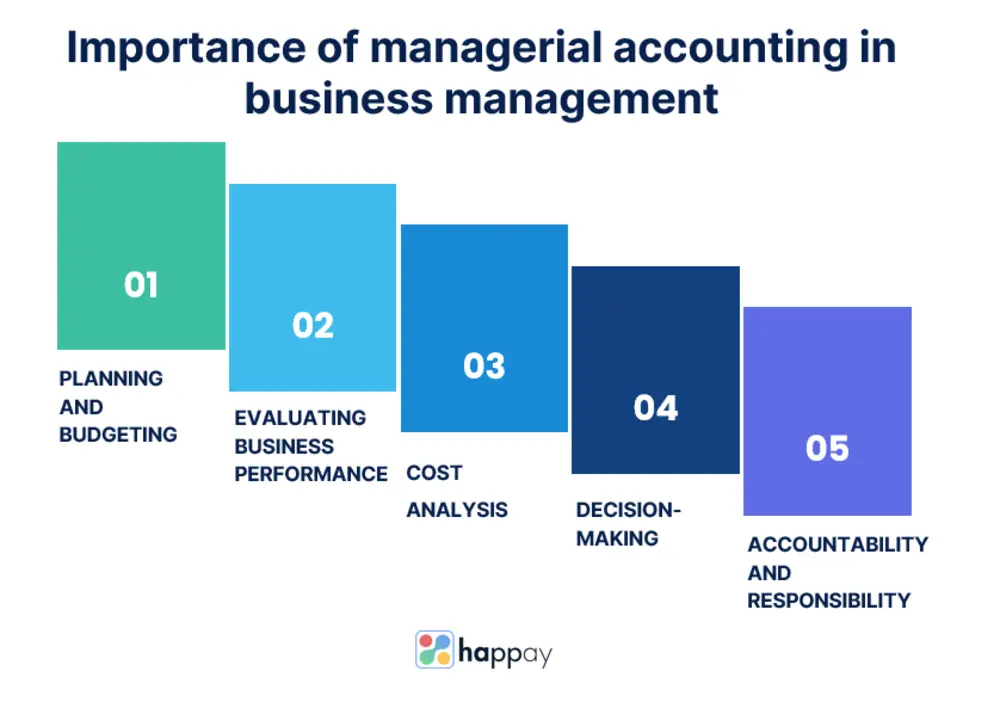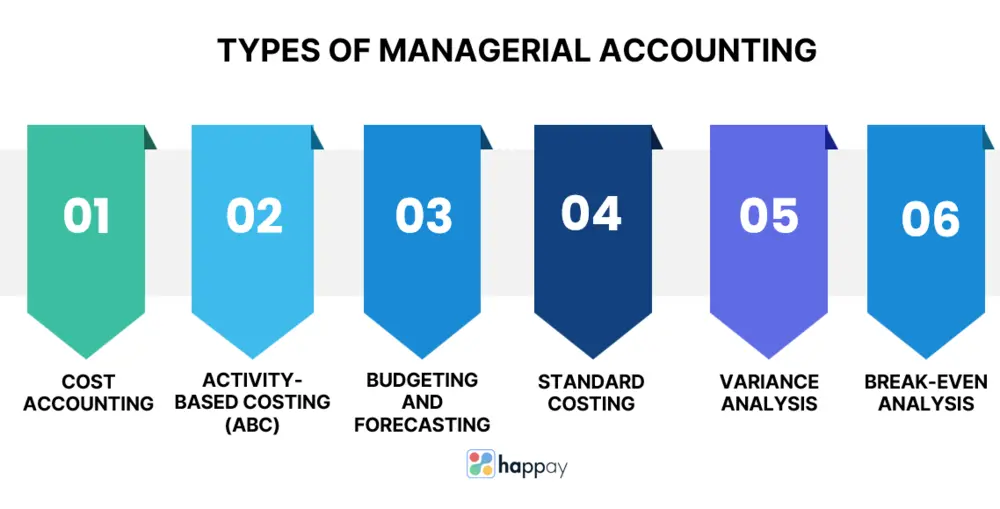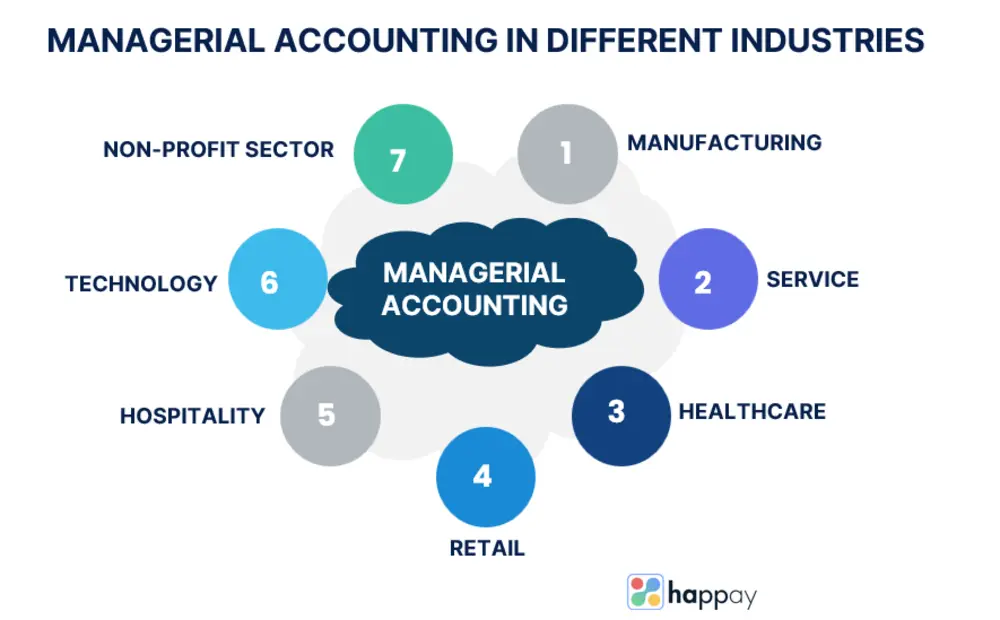Introduction
Managerial accounting is a critical aspect of financial management within organizations. It helps with managerial decision-making through a series of steps in financial information that include:
- Identification
- Measurement
- Analysis
- Interpretation
- Communication
While financial accounting primarily focuses on providing information to external stakeholders, managerial accounting aims to support internal management in planning and controlling activities. Despite its undeniable significance in enhancing organizational performance, managerial accounting practices and their importance still need to be understood or addressed.
This article looks at the meaning and purpose of managerial accounting to help you understand the concept better. Let’s explore its practical uses in day-to-day business operations and emphasize its importance in achieving sustainable growth.
Quick Read: Difference Between Financial Accounting and Management Accounting: A Deep Dive
What is the meaning of managerial accounting?
Managerial accounting is commonly referred to as management accounting. It is a vital aspect of financial management that helps you make informed business decisions. Management accounting involves collecting, analyzing, interpreting, and communicating financial data.
When we look at financial accounting, it primarily caters to external stakeholders like investors and regulators. On the other hand, management accounting helps support internal management teams. It provides valuable insights into a company’s costs and profitability. You can assess the effectiveness of business strategies and make data-driven choices.
It serves as a compass, guiding your management through complex operational challenges and ensuring the organization stays on course toward achieving its goals.
Read More: What is Corporate Accounting? A Comprehensive Guide
Importance of managerial accounting in business management
Managerial accounting is an indispensable tool that equips you with the financial information to navigate the complexities of running a successful organization. Let’s explore its significance in detail.

1. Planning and budgeting
Analyzing historical financial data and forecasting future trends empowers you to set realistic and achievable budgets that align with the company’s objectives. These budgets serve as a roadmap. They guide the allocation of resources and ensure every department functions cohesively towards the common goal.
2. Evaluating business performance
You can use performance reports, like variance analysis, to identify areas of strength and weakness. Understanding these performance indicators enables you to take proactive measures and optimize operational efficiency.
3. Cost analysis
Breaking costs into fixed and variable components helps you make informed pricing and production volume decisions. An in-depth understanding of costs allows your company to remain competitive while maintaining profitability.
4. Decision-making
Managerial accounting provides data-driven insights that reduce uncertainty and minimize risks. Besides determining the profitability of a new product line, it also helps evaluate investment opportunities and decide whether to make or buy a component. You can rely on accurate financial information to make well-informed choices for the company’s success.
5. Accountability and responsibility
Performance evaluation metrics make you and your employees more aware of their contributions. They remain motivated to meet or exceed targets. The accountability culture fosters ownership and teamwork. It drives the company swiftly toward its strategic objectives.
Read About: Budgeting and Forecasting: A Comprehensive Guide
Role and objectives of managerial accounting
Let’s look at the key roles and objectives that make management accounting an indispensable asset in business management.
1. Providing relevant information
The basic goal of management accounting is to provide decision-makers timely and accurate financial information to decision-makers. It includes data on costs, revenues, profits, budgets, and performance metrics. A vital source of information, it helps you assess the business’s financial health for achieving strategic goals.
2. Facilitating planning and budgeting
Management accounting helps you formulate comprehensive plans and budgets. Analyzing historical financial data and forecasting future trends help establish realistic and attainable budgets. These activities guide effective resource allocation and help set achievable targets across departments.
3. Supporting decision-making:
At times, you may face decision-making challenges that impact your organization’s performance. Managerial accounting helps you overcome this by providing cost-benefit analysis and relevant financial data. It ensures you can evaluate different options and select the course of action that aligns best with the company’s objectives.
4. Evaluating performance
An essential role of management accounting is to evaluate the performance of different aspects of the business. Comparing actual results to budgets and forecasts allows you to identify areas of improvement and take corrective actions to enhance organizational performance.
5. Cost analysis and cost control
Management accounting breaks down costs into fixed and variable components. It provides valuable insights into cost structures. The analysis helps you understand the cost drivers of products or services. Besides aiding in pricing decisions, it also enables cost control measures to maximize profitability.
6. Assisting in strategy formulation
Management accounting contributes to strategic planning by providing financial insights and data-driven assessments. It aids you in evaluating the potential risks and rewards associated with each option. There’s a more calculated and informed approach to long-term business planning.
7. Ensuring compliance and ethical standards
Managerial accountants ensure financial practices adhere to relevant laws and ethical standards. It helps build trust among stakeholders and contributes to the company’s credibility.
Quick Learn: Difference Between Cost Accounting and Financial Accounting
Types of managerial accounting
Let’s explore some of the critical types commonly employed by businesses.

1. Cost accounting
Cost accounting analyzes and records the costs associated with producing goods or services. It involves tracking direct costs (raw materials and direct labor) and indirect costs (overhead) to determine the total cost of production. Cost accounting helps you understand the cost structure of products or services. It further helps with pricing decisions and identifies opportunities for cost-efficiency improvements.
2. Activity-based costing (ABC)
ABC is a specialized form of cost accounting that allocates indirect costs to specific activities rather than departments or products. Identifying cost drivers and linking them to activities helps ABC accurately track the consumption of resources. It helps make more informed decisions regarding resource allocation and process improvements.
2. Budgeting and forecasting
Budgeting involves setting financial targets for the organization for a period. On the other hand, forecasting predicts future financial performance based on historical data and expected market conditions. Budgeting and forecasting are crucial for planning purposes. They help you allocate resources and set performance benchmarks.
3. Standard costing
Standard costing involves establishing predetermined cost standards for materials and overhead. These standards serve as benchmarks against which actual cost comparison happens. Deviations from regular costs can highlight areas requiring attention. It allows you to take corrective actions promptly.
4. Variance analysis
Variance analysis compares actual performance with the budgeted or standard version. Examining the differences (variances) between the two helps identify the root causes of deviations. You can determine whether they are due to controllable factors or external influences. Variance analysis is a powerful tool for performance evaluation and continuous improvement.
5. Breakeven analysis
The analysis helps you determine the level of sales or production required to cover fixed and variable costs, resulting in zero profit or loss. Understanding the breakeven point is crucial for making pricing decisions and assessing the impact of cost changes or sales volumes. It also guides the financial feasibility of new projects.
Read About: 8 Best Inventory Management Software in 2023
Critical concepts in managerial accounting
Let’s explore some of the concepts managers rely on to navigate the complexities of business management.
1. Cost behavior
Understanding how costs behave in response to changes in activity levels is critical in management accounting. Costs can be either fixed, variable, or mixed (semi-variable). Fixed costs remain constant within a relevant range of activity, while variable expenses fluctuate proportionally with changes in activity levels. Composite costs include fixed and variable elements, making them more complex to analyze.
2. Cost-volume-profit (CVP) analysis
CVP analysis examines the connection between costs, volume, and profit to determine the breakeven point. A breakeven point is the level of sales or production at which total revenues equal total costs.
Besides using the CVP analysis to make pricing decisions, you can also use it to assess the impact of changes in sales volumes and evaluate the potential profitability of new ventures.
3. Relevant and sunk costs
It is essential to differentiate between relevant costs (future costs that differ among alternatives) and sunk costs (past costs that cannot change). Focusing on applicable expenses allows you to make choices based on the most pertinent information. You can also avoid getting influenced by costs already incurred and non-recoverable.
4. Incremental analysis
Incremental analysis is also known as differential analysis. It involves comparing different alternatives’ potential revenues and costs to identify the option with the highest net benefit. Focusing on the incremental effects of each decision helps select the option that maximizes overall profitability.
5. Contribution margin
The contribution margin shows the difference in total revenues and variable costs. It is a crucial indicator of the profitability of individual products or services. It helps you allocate resources to the most profitable aspects of the business.
6. Budgets and budgetary control
Budgets serve as financial roadmaps, setting forth the organization’s financial goals and plans for a period. You can use budgets to monitor performance and compare actual results against planned figures.
7. Responsibility accounting
In larger organizations, responsibility accounting involves assigning responsibility for specific areas to individual managers. Each manager is accountable for the financial performance of their designated area. Responsibility reports help assess their performance.
8. Just-in-time (JIT) and lean accounting
JIT and lean accounting emphasize reducing waste and increasing efficiency for streamlined processes. These approaches aim to optimize resource utilization and reduce inventory costs for enhanced operational efficiency.
Learn About: Cost of Capital: What is it, Types, Formula & How to calculate it?
How does managerial accounting work?
Let’s take a closer look at how management accounting works and the critical steps involved in the process:
1. Data collection and analysis
The first step involves collecting relevant financial data from sources within the organization. The data includes information on costs, revenues, business expenses, and other financial transactions. Data analysis helps gain insights into the business’s financial performance and operational efficiency.
2. Cost classification
Managerial accountants classify costs based on their behavior and relationship to production levels. Understanding cost behavior is crucial in making informed decisions. It helps you predict how prices will change in response to fluctuations in activity levels.
3. Cost allocation
In some cases, costs need allocation based on specific products or projects. For example, indirect expenses like rent and utilities may need to be distributed among different cost centers. Managerial accountants use allocation methods, like activity-based costing, to assign these costs fairly.
4. Budgeting and forecasting
Management accounting involves preparing budgets that outline the financial targets for the organization in a period. Budgets serve as roadmaps, providing a clear direction for resource allocation and performance evaluation. Forecasting, on the other hand, uses historical data and business trend analysis to predict future financial performance. It helps you anticipate challenges and opportunities.
5. Performance evaluation
Managerial accountants analyze actual performance against forecasted figures to assess how well the organization is performing. Variance analysis identifies deviations and helps pinpoint areas that require attention. The evaluation process helps set performance benchmarks and take corrective actions.
6. Decision support
Managerial accounting helps you with making critical decisions. Whether evaluating the profitability of a new product or assessing investment opportunities, you can rely on financial information and analysis provided by management accounting to guide your choices.
7. Communication
Effective communication of financial information is crucial in management accounting. Decision-makers need concise reports to understand the organization’s financial health and make timely decisions. Managerial accountants prepare reports that present financial data in a format that is easy to comprehend and interpret.
8. Continuous improvement
Management accounting is an iterative process. It continually evolves as the organization grows and changes. You can review and analyze financial information to identify areas for improvement and optimize business processes. The ongoing analysis ensures that data-driven decisions align with your organization’s strategic goals.
Quick Read: 10 Best Financial Management Tools for CFOs
Managerial accounting techniques in decision-making
Let’s explore some of the critical techniques used in decision-making.
- Incremental analysis: When faced with multiple alternatives, incremental analysis helps you compare each option’s potential revenues and costs. Focusing on the accumulative effects of each decision helps identify the choice that maximizes overall profitability.
- Relevant costing: Relevant costing involves analyzing costs and revenues pertinent to a specific decision while excluding irrelevant expenses. The technique helps avoid getting influenced by sunk costs and concentrate on expenditures that will affect the future. Considering only the relevant information enables you to make wise decisions.
- Cost-volume-profit (CVP) analysis: CVP analysis helps you understand the breakeven point. It further allows you to evaluate the impact of changes in sales volume on profitability. You can make sound pricing and production decisions based on such analysis.
- Make-or-buy decisions: Management accounting helps decide whether to produce a component or purchase it from an external supplier. It provides the relevant cost data to conduct a cost comparison. Comparing in-house production costs with buying from outside can help identify the most cost-effective option.
- Capital budgeting techniques: Capital budgeting techniques, like net present value (NPV) and internal rate of return (IRR), help evaluate long-term investment opportunities. These techniques assess the potential returns and risks associated with investment projects. It enables you to prioritize and select projects that align with your organization’s financial objectives.
- Constraint analysis: When resources are limited, constraint analysis helps identify bottlenecks that hinder production or limit profitability. Addressing these constraints helps optimize resource utilization and improve efficiency.
- Just-in-time (JIT) and lean accounting: JIT and lean accounting emphasize minimizing waste and reducing inventory. The resultant streamlined processes help enhance efficiency. These techniques provide insights into cost-saving opportunities and process improvements to promote a culture of continuous improvement.
- Activity-based costing (ABC): ABC allocates indirect costs to specific activities or services based on the consumption of resources. The approach provides a more accurate understanding of the costs associated with each product or service. You can make better pricing decisions and allocate resources efficiently.
Learn More: 6 Best Cash Flow Management Software in 2023
Managerial accounting in different industries
Let’s explore how management accounting applies to different industries.

1. Manufacturing
Management accounting plays a crucial role in cost control and production optimization. Cost accounting techniques help identify the costs associated with producing each product. It allows managers to make pricing decisions and optimize production processes. Additionally, just-in-time (JIT) and lean accounting principles are commonly employed to minimize waste and reduce inventory costs.
2. Service
In the service industry, the focus is on providing intangible services rather than physical products. Management accounting techniques apply differently here. Activity-based costing (ABC) is particularly valuable, as it helps allocate indirect costs to specific service activities. It provides a more accurate view of the actual costs of providing services. Budgeting and forecasting are also vital for managing service demand and resource allocation.
3. Healthcare
Management accounting assists in cost management and resource allocation in the healthcare sector. Healthcare providers use cost accounting to determine the expenses associated with patient care and medical procedures. Using relevant costing allows managers to evaluate the costs and benefits of adopting new medical technologies.
4. Retail
Management accounting techniques are employed in retail for inventory valuation and pricing strategies. Retailers often use cost-volume-profit (CVP) analysis to determine the breakeven point for different products. They can make decisions related to sales promotions and product assortment.
5. Hospitality
The hospitality industry relies on management accounting for cost control and revenue management. Managers use variance analysis to assess the performance of different departments, like food and beverage and entertainment.
6. Technology
In the fast-paced technology sector, management accounting helps assess the financial feasibility of research and development projects and capital investments. Capital budgeting techniques, like Net Present Value (NPV), assist managers in evaluating the potential returns and risks associated with innovative ventures.
7. Non-profit sector
Even in the non-profit sector, management accounting is essential for financial planning and fundraising. Non-profit organizations use cost accounting techniques to allocate program expenses and determine the cost per beneficiary.
Read More: 10 Best Business Budgeting Software & Tools
Advantages of managerial accounting
Let’s explore some key benefits that make management accounting an invaluable asset.
1. Informed decision-making
Management accounting provides you with timely and relevant financial information. The data-driven approach helps you make informed decisions based on accurate assessments of costs and revenues. You can chart a course that aligns with the organization’s goals with a comprehensive understanding of the financial implications of various choices.
2. Performance evaluation and control
Management accounting facilitates performance evaluation by comparing actual results against budgets and forecasts. Variances between planned and actual performance provide insights into areas that require attention. The continuous monitoring and control mechanism allows managers to take corrective actions promptly. It ensures your organization stays on track toward its objectives.
3. Cost optimization
Cost analysis is a fundamental aspect of management accounting that helps you understand cost behavior and identify cost-saving opportunities. Distinguishing between fixed and variable costs enables you to focus on reducing avoidable expenses and enhancing operational efficiency.
4. Resource allocation
Efficient resource allocation is critical to a company’s success. Management accounting helps determine the most productive allocation of resources, be it finances or materials. The optimization ensures resource assignment for initiatives that generate the highest returns.
5. Strategic planning
Management accounting provides a solid foundation for strategic planning. Forecasting future financial performance and analyzing market trends helps develop well-informed long-term plans that capitalize on opportunities and mitigate potential risks—the forward-looking approach positions your organization for sustained growth and success.
6. Flexibility and adaptability
Management accounting techniques can meet the specific needs of different businesses and industries. Whether it’s cost accounting, activity-based costing, or variance analysis, you can choose the most relevant tools for your decision-making processes.
7. Continuous improvement
Management accounting fosters a culture of continuous improvement. Regularly reviewing performance metrics and making data-driven adjustments helps optimize processes and reduce inefficiencies.
8. Effective communication
Clear and concise financial reports generated through management accounting facilitate effective communication among departments and management levels. These reports give stakeholders a comprehensive overview of the organization’s financial health.
Read More: Financial Assets: Meaning, Types, Importance & How does it works?
Limitations of managerial accounting
Let’s explore some critical limitations of management accounting:
1. Subjectivity in cost allocation
The process of allocating indirect costs to specific products or activities can be subjective and prone to bias. Different allocation methods may lead to varying results. It will affect the accuracy of cost information used for decision-making.
2. Focus on financial information
Management accounting primarily relies on financial data, which may provide a partial picture of all aspects of the business. Non-financial factors, like customer satisfaction, can impact the organization’s performance. However, it may not be reflected in financial reports.
3. Short-term orientation
Management accounting emphasizes short-term goals and results. These may lead to decisions that prioritize immediate gains over long-term sustainability. Strategic planning may not work if focusing solely on meeting short-term targets.
4. Costly and time-consuming
Implementing and maintaining a robust accounting system can be costly and time-consuming. Small businesses or organizations with limited resources may find investing in sophisticated accounting techniques challenging.
5. Complexity in interpretation
Management accounting data can be complex and require skilled interpretation. Managers must possess a strong understanding of accounting principles and be able to analyze financial reports effectively to make well-informed decisions.
6. Assumptions and estimates
Management accounting involves making assumptions and estimates to fill gaps in data. These assumptions may not always hold true. It can lead to potential inaccuracies in decision-making.
7. No guarantee of future performance
While management accounting relies on historical data and forecasts, it cannot predict future events with certainty. Market conditions and customer preferences can change rapidly to impact the accuracy of projections.
8. Ethical concerns
There can be ethical challenges, like manipulating financial data to present a favorable image or meet targets. Ethical lapses can undermine the integrity of financial information and erode trust within the organization.
Read More: 9 Best Accounting Software for Small Business
Managerial accounting vs. financial accounting
Let’s explore the key differences between managerial accounting and financial accounting.
Aspect |
Managerial Accounting |
Financial Accounting |
|
Focus |
Internal purposes: Focuses on providing information to aid managerial decision-making and company operations. |
External purposes: Focuses on providing information to external stakeholders, such as investors, creditors, and regulatory authorities. |
|
Primary Users |
Managers, Executives, and Internal Users |
External Stakeholders |
|
Time Horizon |
Future-Oriented |
Historical |
|
Scope of Information |
Detailed and Specific to Different Levels of Management |
Summarized and Standardized for External Reporting |
|
Reporting Frequency |
As Needed |
Regular Periodic Reports (Quarterly, Annually) |
|
Financial Statements |
Not Required |
Required (Balance Sheet, Income Statement, Cash Flow Statement) |
|
Format of Information |
Flexible and Tailored for Managerial Needs |
Standardized (Generally Accepted Accounting Principles – GAAP) |
|
Focus on Decision-making |
Yes |
No |
|
Cost Behavior Analysis |
Yes |
No |
|
Sunk Costs Consideration |
No |
Yes |
Read More: Difference Between Financial Accounting and Management Accounting: A Deep Dive
Bottom line
Managerial accounting is a dynamic tool that empowers you to navigate the complexities of modern business management effectively. Its valuable financial insights and decision-making abilities help act as the backbone of successful organizations across industries.
Its versatile techniques offer a comprehensive approach to addressing various organizational challenges, from cost analysis and budgeting to strategic planning and continuous improvement. Leveraging the power of management accounting to make data-driven decisions will help you lead your organization toward a prosperous future.
FAQs
Managerial accounting involves providing financial information to aid internal decision-making and support business management. It is different from financial accounting, which focuses on giving standardized financial statements for external stakeholders like investors and regulators.
Cost-volume-profit (CVP) analysis helps in decision-making by assessing the relationship between costs, production or sales volume, and resulting profits. It helps managers determine the breakeven point. They can also evaluate pricing strategies and understand the impact of cost changes or sales volumes on profitability.
Budgeting and forecasting assist in the planning and control process by setting financial targets and predicting future financial performance. Budgets serve as roadmaps, while forecasting allows managers to anticipate challenges and opportunities.
Standard costing involves setting predetermined cost standards for materials and labor. It helps with variance analysis by comparing actual costs to expected costs. Managers can identify reasons for deviations and take corrective actions.
In capital budgeting and investment decisions, managerial accounting techniques like Net Present Value (NPV) and Internal Rate of Return (IRR) help evaluate long-term investments’ potential returns and risks.
Managerial accounting performance evaluation happens through variance analysis. It may include budget vs. actual comparisons and Key Performance Indicators (KPIs). KPIs are specific metrics to measure performance in critical areas of the business.
Managerial accounting differs across industries based on the needs and challenges of each sector. Techniques and approaches may suit the characteristics of different industries, like manufacturing and healthcare.
Information technology integration with managerial accounting practices happens through accounting software. Some common examples include data analytics tools and enterprise resource planning (ERP) systems. These tools help streamline data analysis and reporting processes.
Ethical considerations in managerial accounting include maintaining confidentiality and ensuring accurate and honest reporting. It also includes avoiding biased or manipulated financial information that could mislead decision-makers.
Businesses can benefit from implementing managerial accounting practices by making data-driven decisions. They can also focus on improving cost control and optimizing resource allocation.
Managerial accounting supports strategic decision-making in organizations by providing financial insights for evaluating opportunities. It also helps analyze market trends and aligns business strategies with long-term goals.
Communicating managerial accounting data effectively to stakeholders through clear and concise financial reports is possible. Presentations and dashboards highlighting KPIs and the organization’s financial health also help.



Discussion about this post